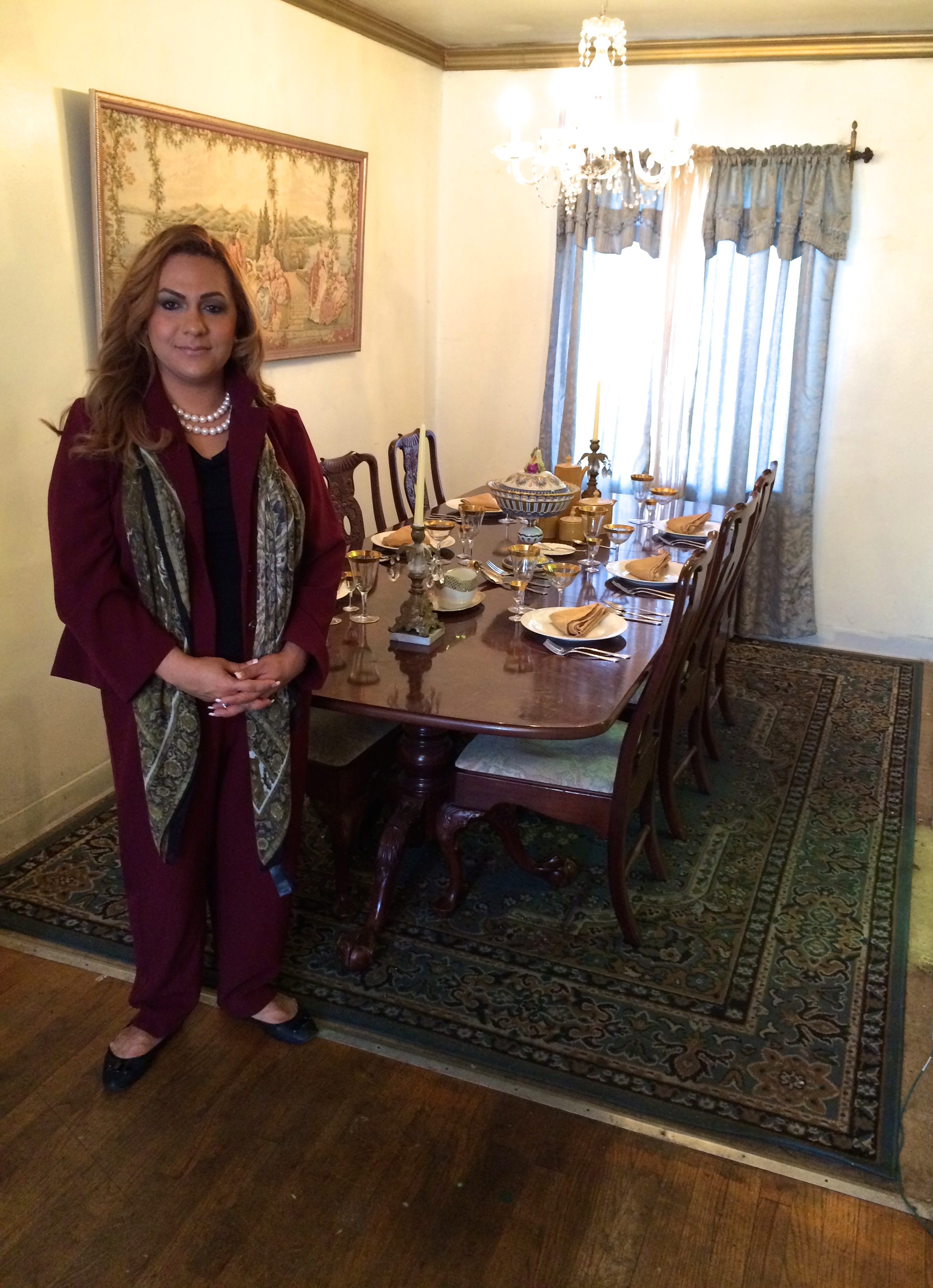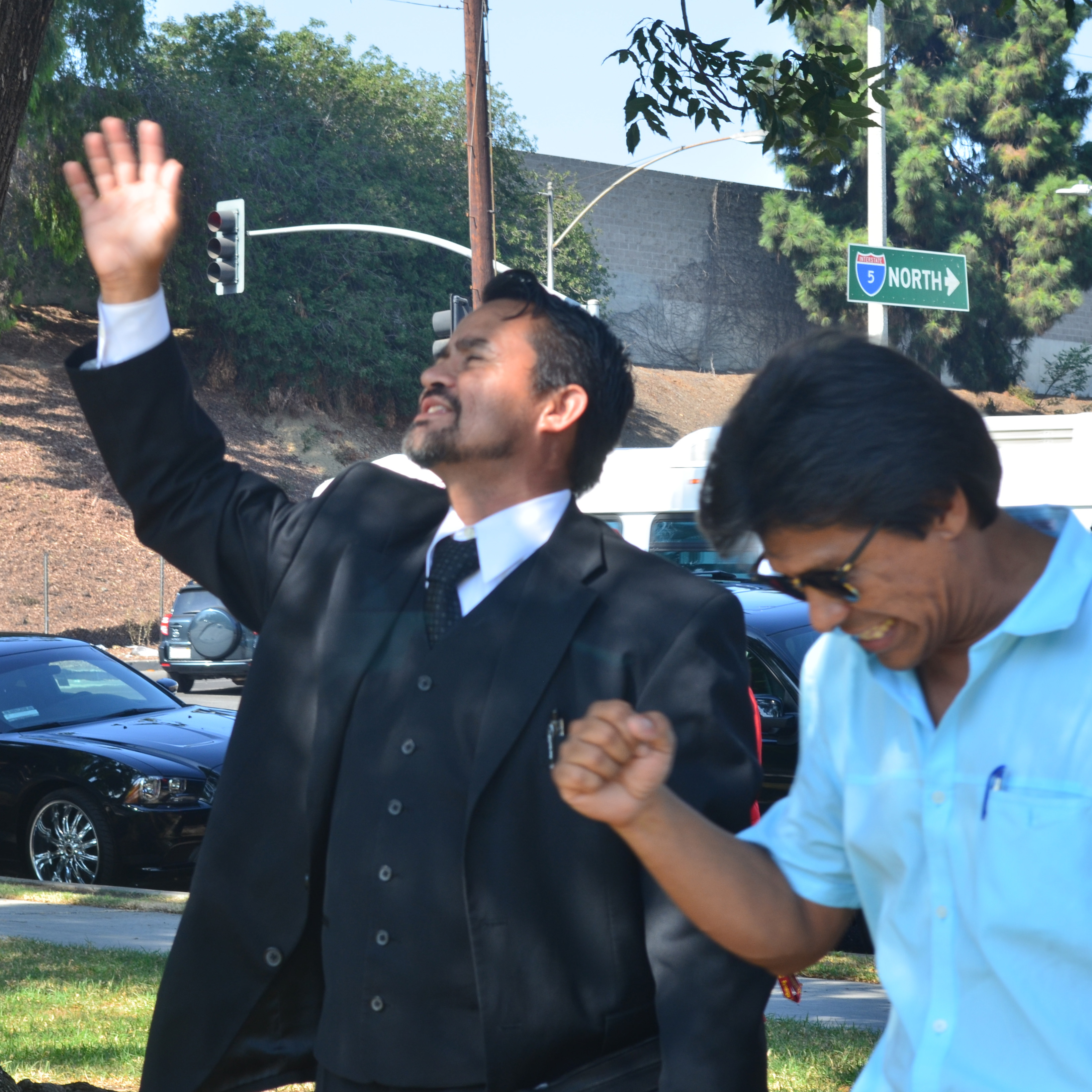A Community Bonded By Art
Unity and Solidarity Event
In an effort to promote a united community, local musicians, artists and businesses gathered on Saturday, Dec. sixth to hold the first annual Unity and Solidarity Festival in Boyle Heights. People at the festival listened to live music preformed by local mariachi bands, met local business owners and even got to do some shopping just in time for the holidays.
According to event director, Carlos Cortez, the main mission of the event is to encourage a collaborative work environment among local businesses and artists within the community. Cortez also says the festival is to celebrate the rich culture, which exists in the Boyle Heights community. "Boyle Heights is a place originating from Italian, German, some Irish and Mexican migrants, Cortez said. "Over the years the community has very much become a Mexican-American community and this event reaffirms the community's existence."
Community member, Jose Martinez, was selling a wide array of hand-made paper mache turtles, which varied in size and color. According to his daughter, Diana Martinez, these turtles are a traditional Mexican craft and are commonly made by community members.
Self Help Graphics
Self Help Graphics is a community-ran organization providing opportunities for Latino and Chicano artists in the L.A. area. The non-profit group encourages local artists to take part in community workshops, classes and events. Many artists from the L.A. area has volunteered to teach weekly or monthly classes to a range of aspiring artists in the community.
Dewey Tafoya is a member of Self Help Graphics and teaches a printmaking class at the Self Help Graphics location in east L.A. “Over the years we have become one of the most recognized Latino printmaking centers in America,” Tafoya said.
It was just a few years ago program manager, Joel Garcia, started at Self Help Graphics as a volunteer. Now, he oversees many of the workshops and events put on for the community. “The most rewarding part of my job,” Garcia explained. “Is watching artists develop within this community. Not only have they developed as artists, but also as leading community members. "Its incredible to see these young artists," Garcia explained. "Grow into the community leaders that artists can and should be."
From City Walls to Utility Boxes
As a representative in the Los Angeles City Council for District 14, Jose Huizar has been a major advocte of the arts. In 2013 a Huizar-authored Mural Ordinance was passed and ended the 11-year ban of murals on private property. Soon after this, Huizar commissioned nine murals to be painted on the city's utility boxes, which line E. First St. in Boyle Heights. Since then the tour of painted utility boxes has grown by the participation of community members adding their own touch to unpainted boxes. Much of the information found on these boxes and their artists can be seen at Boyle Heights Art Box Tour

E. First St. and Bailey St.
By Fabian DeboraIn Debora's mural, he painted a portrait of his grandmother to remind the community about the importance of family. Along with this, the "Abuelita" figure is meant to capture the wisdom that comes with age, and remind the community that our elders tell the story of Angelenos history.

E. First and State St.
This piece pays a tribute to a famous blues musician, Johnny Otis, who passed away in 2012. Otis was commonly known as the "Godfather of Rhythm and Blues." The other sides of the utility box feature dancing silhouettes and faces on unidentified people. As well as a tribute to Otis, the piece is an overall representation of the 1920's music scene.

Under the Boyle Heights Bridge
Although this painted utility box fits right in with the rest of them on E. First St., Cortes' box is not apart of the official tour. Regardless of receiving an invitation, the Boyle Heights artist was inspired to add his work to the tour anyways. Cortes painted the young face of his three-year-old nephew, in hope that one day it will be a source of motivation and inspiration for his nephew as he grows up in the community.

E. First St. and Boyle Ave.
Coming from a long family line of musicians, Gonzalez painted his mother, uncles and cousins who came to the community in the 60's and played mariachi. The piece compliments the common mariachi theme in the community, as well as a mural by Robert Vargas dedicated to the mariachi culture in east LA Gonzalez was one of the few artists on the tour who used only sepias, in order to stop the paint from fading.

E. First St. and Chicago St.
Aside from the utility box, Estrada's work has not made much of an appearance in the Boyle Heights community. Still, people recognize his work when seen because it is so unique in its detail and style.

E. First St. and State St.
The artist known as "Vyal One", has a signature style all his own, which usually features an array of spray painted eyes. His work is traceable throughout the different parts of LA.

E. First and Cummings St.
As an avid bicyclist herself, Ramirez acted as her own model for a figure featured on one side of the utility box. In part, this piece celebrates the active biking community in east LA. Her sister and niece are on another side, where they are seen reading a book. The books represent the connection between parents being our first teachers in life.

E. First St. and Breed St.
As a gardner herself, Figueroa used bright colors and graphics to inspire the many children who pass by the utility box. The surrounding Breed Street makes it hard not to notice the vibrant colored plants and flowers painted all over the box.

E. First and Soto St.
Callejo's utility box painting depicts the Zoot Suit riots of 1943. besides the one on 1st and Soto, Callejo has painted about 35 other utility boxes around the Silver Lake and Echo Park area, according to the artist. Boyle Heights is the first community to allow him to depict the Zoot Suiters in his art.



